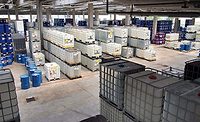Strategic Sourcing

Strategic sourcing is a term that continues to increase in popularity. Penned in the 1980s, this is a phrase that today results in more than three million results in online searches. It is the focus of a vast number of blogs, newsletters, tweets, etc. A cottage consulting industry has been spawned, and universities are beginning to incorporate strategic sourcing into their graduate school curriculums. This article will outline the strategic sourcing process and discuss the impact that a distributor can make.
Strategic Sourcing Process
For the purposes of this article, the stages of the strategic sourcing process are as follows.
Assessment of Current Competencies
- Evaluate your core supply chain competencies to identify what you do well, uncover weaknesses that can be improved on, and highlight areas that you need to implement.
- How does your current supplier base perform?
- Establish a baseline of where you are at today.
- Evaluate the structure of your procurement functions – are they effectively aligned with your supply base?
Market Analysis
- Who are they key suppliers by product category?
- What are the key drivers?
- Do any geographic constraints exist?
- What macroeconomic factors, if any, may impact supply?
Vendor Analysis
- Create supplier profiles.
- Categorize current suppliers.
- Identify suitable suppliers for each key product/service category.
- Reduce risk by having knowledge of supply chain and establishing multiple sources for key materials.
- Understand suppliers’ production and technical capabilities.
- What metrics should be required from suppliers (on-time delivery performance, quality ratings, innovation, price stability, etc.)?
- What quality standards are required – ISO, NACD, etc.?
Cost Analysis
- What do you spend for key product/service categories?
- What is the cost of stock outs, shortages, etc.?
- What is the impact of currency due to location of key suppliers?
- Are your costs and required service levels aligned?
- Working capital.
Logistics Networks and Internal Operations
- Gain a broader understanding of the complete logistics chain.
- Packaging/handling requirements and their impact on operations.
- Environmental footprint.
- Where are you at risk?
Develop a Strategy
- What is the goal?
- What is the time frame for implementation?
- Is your sourcing strategy aligned with your corporate strategies? For example, does this assist with your geographic expansion?
- Identify the priority items that can make immediate and long-term impacts on your business.
- Work closely with suppliers to understand their capabilities and make sure they can meet your needs today and in the future.
-
Identify tangible, measurable results.
Negotiation
- Meet with key suppliers to review your objectives and time frames.
- What is the cost/service tradeoff?
- Establish contractual pricing.
- Who will collaborate with you to meet your goals?
- Leverage relationships as you consolidate your base of suppliers.
Execution
- Cross-functional approach. Strive to get departments working closely together toward a common goal by limiting silo mentality.
- Focus your resources on the most important categories.
- Appoint a sole champion of the program.
Monitor Results
- Communicate regularly internally and externally.
- Make results visible.
- Make adjustment as necessary based on results.
How Can a Distributor Impact Strategic Sourcing?
As noted in the PCI article, Distributors Play a Critical Role in the Supply Chain, from the September 2008 issue, distributors provide value to customers in the following areas:
- Quicker order processing;
- Flexible payment terms;
- Global sourcing;
- Product bundling; and
- Close relationships.
Specifically relating to the strategic sourcing process, a few key components that may help achieve your objectives are global sourcing with full transparency of the supply chain, and product bundling.
Global Sourcing

|
| Figure 1 Click to enlarge |
Having access to raw materials globally and a fundamental understanding of the key stakeholders in your supply chain will not only allow you to better understand the complexity of your supply chain, but will also increase your awareness of the important raw material price drivers. Distributors oftentimes do not want to disclose where they source products, as they are afraid that customers will begin to purchase directly, and ultimately cut out the distributor. With regard to specialty chemicals, we have found that this approach is short sighted and ultimately hampers our ability to cost effectively meet our customers’ requirements. A distributor relationship based on transparency, where our customer knows the manufacturer, has the ability to audit their facilities, understands the production capacities, sees where key intermediates are sourced, etc., is one that allows the three parties to work collaboratively to meet each other’s objectives. The relationship has to be a win – win – win for this to be a long-term success, and is not something that can be developed overnight (Figure 1).
From a manufacturer’s standpoint, this type of relationship is beneficial, as they have an avenue for unfiltered market knowledge by having direct access to the customers’ technical, purchasing, operations and management staffs. Some tangible results for a customer are that they will form closer professional relationships with the manufacturer, which may provide access to new product launches sooner, and may increase the likelihood of obtaining product in times of shortage.
Product Bundling
As part of the vendor management stage of strategic sourcing, having a strong relationship with regional distributors may allow you to reduce your overall number of suppliers. Distributors typically offer a wide range of complementary products, which allows customers to buy several items while reducing logistics and administrative costs.
Furthermore, with a smaller number of suppliers, you will have time to focus on those partners that will assist in achieving your goals. You will be able to invest the time and energy in furthering the relationship and better understanding their operation, strategies and objectives.
Conclusion
A fundamentally sound strategic sourcing strategy will be a differentiating factor for your business and will assist in achieving your corporate goals. By implementing the process, you will uncover opportunities for improvement, identify risk and gain a better understanding of your key suppliers. This process is not one that should be conceived as a one-time occurrence but rather one that develops into the foundation of your supply chain management.
For more information, e-mail mmckenna@marooninc.com or visit www.marooninc.com.
Looking for a reprint of this article?
From high-res PDFs to custom plaques, order your copy today!






